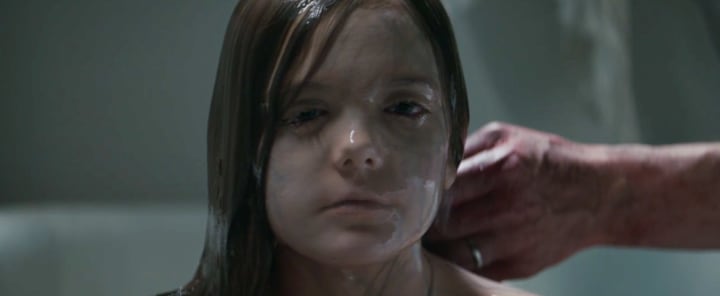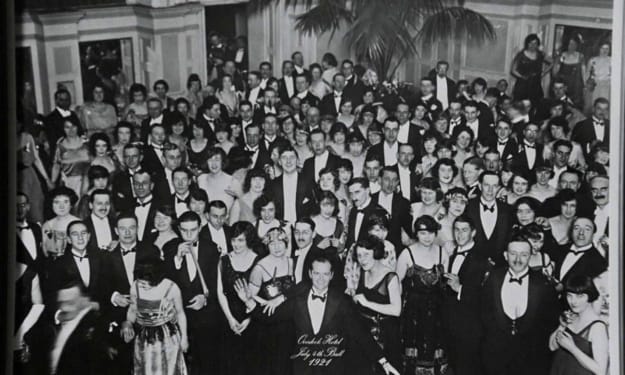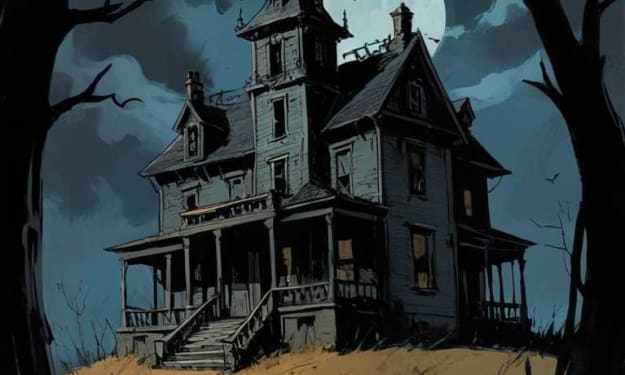Why the 'Pet Sematary' Remake Soars Above the Original
A fresh and subtle reimagining of the 80s horror film

Oftentimes, the best song covers are the ones that reinvent the wheel completely. Other times, the most memorable covers are the ones where musicians incorporate the elements that worked best in the original and embellish them by adding in their own stylistic touches. Pet Sematary, based on the Stephen King story, and directed by Kevin Kölsch and Dennis Widmyer, is the latter. While the 1989 Mary Lambert version of the film still has its merits, the 2019 remake stands as an improvement in nearly every conceivable regard. Though Kölsch and Widmyer aren't names deeply rooted in the horror genre, Pet Sematary makes clear that they're two figures with an admirable flair for the fearsome.
The adaptation opens to the camera panning over a forest in a manner eerily similar to the Doctor Sleep introduction - notably adapted from a Stephen King story and released that very same year. But unlike Doctor Sleep and the Pet Sematary adaptation before it, this exposition is neither bright nor overt. The camera slowly pans in on a burning home and reveals the cryptic aftermath of a gruesome crime. For those who've seen the Lambert original or read the King novel, there are guesses that can be made about what's taken place, but the scene is a cleverly ambiguous introduction.
The film's cinematography doesn't stray far from the formula of most modern horror movies. But for the relatively surface-level story that is Pet Sematary, it's a strategy that effectively drives home its most terrifying moments. The 2019 rendition features a visual atmosphere that pays clear tribute to the environment of the Lambert original. But saturated now with shadowy palettes, stark contrasts and so many of the hallmarks of modern cinema, the feeling of suspense is masterfully imparted.
Shot sequences, artful lighting, and otherworldly landscapes make it feel not just like a cheap rehashing but a necessary re-envisioning. Compared to the often flat visuals of the 1989 film, this modern iteration holds a visual allure that feels contemporary, unsettling and enthralling.
The movie pays an unceasing homage to the original, but finds no shortage of room for enhancement. One of the remake's greatest strengths is its actors. Jason Clarke, famed for his roles in Zero Dark Thirty, Dawn of the Planet of the Apes, and most recently for playing Roger Robb in Oppenheimer, plays the believable Louis Creed. The lesser known Stranger Things actress, Amy Seimetz, plays an equally well-realized Rachel Creed. When compared with their 80s counterparts, they ooze charisma.
Hugo and Lucas Lavoie share the feat of fully embodying the three-year-old Gage Creed that Miko Hughes portrayed thirty years earlier. The physical appearance and childlike whimsy they exude are strikingly well recreated. No role from the film, though, is more of a standout than Jeté Laurence as Ellie Creed. The role that felt like one of the more noteworthy pitfalls in the older Pet Sematary iteration suddenly stands for me as the most exceptional performance of all. With a list of credits that include, Damsel, Sand Castle, The Ranger, and The Night Comes on, Laurence musters such an eerie range of emotion that she puts even The Shining's Danny Lloyd to shame.
Equally arresting is Christopher Young's poignant score. Its pulsating rhythms and menacing melodies echo the sinister undertones of the plot. Though the film's sound signature is largely what people have grown to expect of the modern horror, it's employed well here.
One of the production's greatest strengths is its misdirection. For those who've seen the original, the narrative intelligently plays with the expectation of the viewer so that the blows it deals are all the more surprising. The structure of the story is by and large the same, but the changes made only imbue it with more character.
Fred Gwynne, one of the standout actors from the first movie, is expertly replaced by John Lithgow. And though Lithgow lacks some of Gwynne's colloquial charm in his portrayal of Judd Crandall, what little he subtracts from the foreboding farmer he more than makes up for in his on-screen believability. There's nothing stilted or hollow about his character, and the added depth Lithgow embodies endows him with a welcome humanity. In the Lambert-directed film, the Crandall role seemed like a mere caricature by comparison.
In the original Pet Sematary, it's Gage who dies young. For both those who've seen the prior film, and those who haven't, the remake brilliantly misguides the audience into anticipating his demise. When it's Ellie that dies instead of him, it's enough to draw unexpected gasps from nearly all viewers.
Allowing Ellie to die instead of Gage gives the narrative a launching pad for personality exploration which was absent from the previous version entirely. Three-year-olds are three-year-olds. The depth of emotion one can realistically hope for from them is limited at best. Even children who've been thespians since their breastfeeding days can only be expected to bring so much to the big screen.
in the 1989 version of the film, there's an undeniable malevolence to Gage's laughter once he's returned from the dead - after his burial in the hallowed cemetary for animals. But the ultimate climax of the plot is dulled by the fact that - no matter the build up - he's an unintimidating little toddler.

If the photo above is enough to chill your bones, you may be alone. Perhaps, like me, you even feel an urge to hug the zombified little tyke.
When the Gage character only has the personality depth of a child in diapers to begin with, his reemergence from death struggles to fully impart the intended gravity of the moment.
Because Ellie is old enough to have a range of emotions and interests that extends well beyond "three-year-old child," her reanimation has the room to explore just what it is that this cemetery does. Her return from the death shines a spotlight on what was so flagrantly missing from the first film.
The lines, "Daddy, where am I?" and "Home" carry a more disquieting weight than the prior iteration's entire climax. The deadened, lopsided and catatonic look in her eyes does much of the film's heavy lifting even in moments of piercing silence. The work that the makeup team did with Ellie is horrifyingly realistic.

The lines "back from where?", "I'm dead, aren't I?", and "I can hear the woods" also each manage to impart a deeply haunting and dire message with an unforgettably stoic simplicity.
Another highlight from the Lambert adaptation that's only further explored within the sequel is the sideplot with Rachel Creed, and her bed-ridden sister, Zelda. Though her inclusion still reeks a bit of a narrative afterthought, her scenes stand out in both movies as some of the most viscerally chilling.
In the cinematic universe, remakes bear the burden of proving their necessity. Do they honor the original? Or do they taint their very legacy? Kölsch and Widmyer not only honor the 1989 version of the film, but elevate it to new heights. The directors accentuate the intrinsic terror of resurrection and achieve the rare feat of creating a remake that surpasses its original in all aspects.
The world of Stephen King adaptations is vast and varied. Many of the efforts to capture the macabre magic of his words have faltered famously. But occasionally, these attempts manage to draw something from the story that exalts them from the written word. In many peoples' eyes, The Shining is one of those movies. In my eyes, Pet Sematary is another - a rare and crowning testament to the power of revisiting tales with a modern lens. It's a keenly crafted cinematic cover that refines the work of the original without reinventing or diluting it.
About the Creator
Ben Ulansey
Ben is a word enthusiast who writes about everything from politics, religion, film, AI and videogames to dreams, drones, drugs, dogs, memoirs, and terrorizing Floridians with dinosaur costumes.






Comments
There are no comments for this story
Be the first to respond and start the conversation.